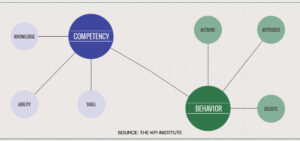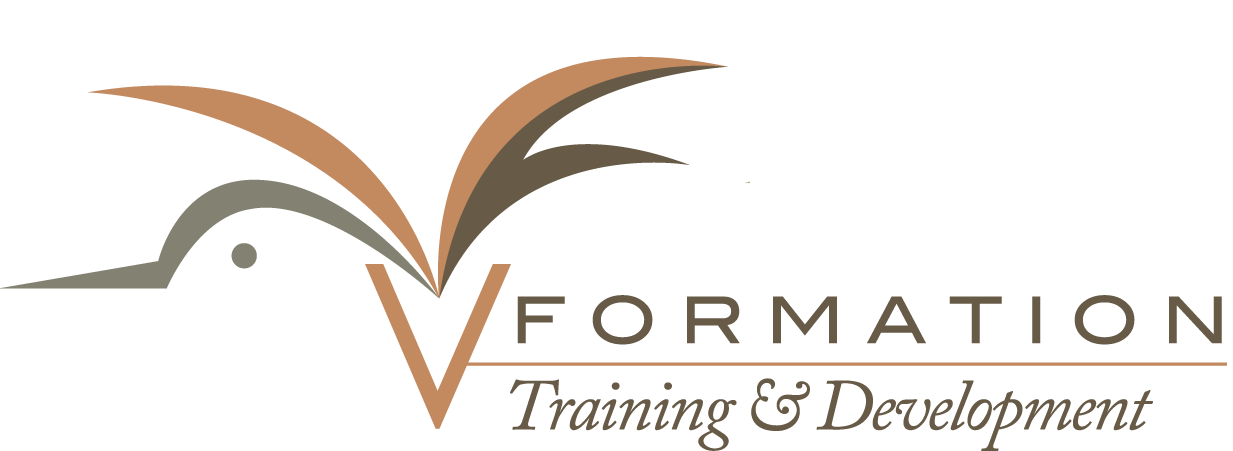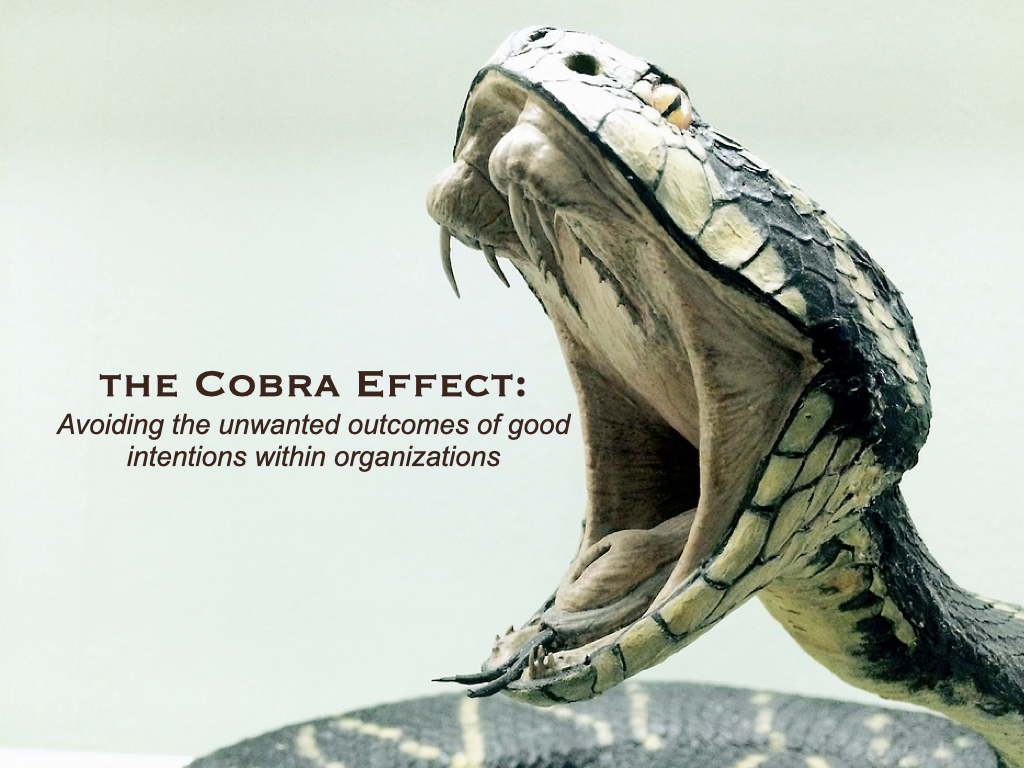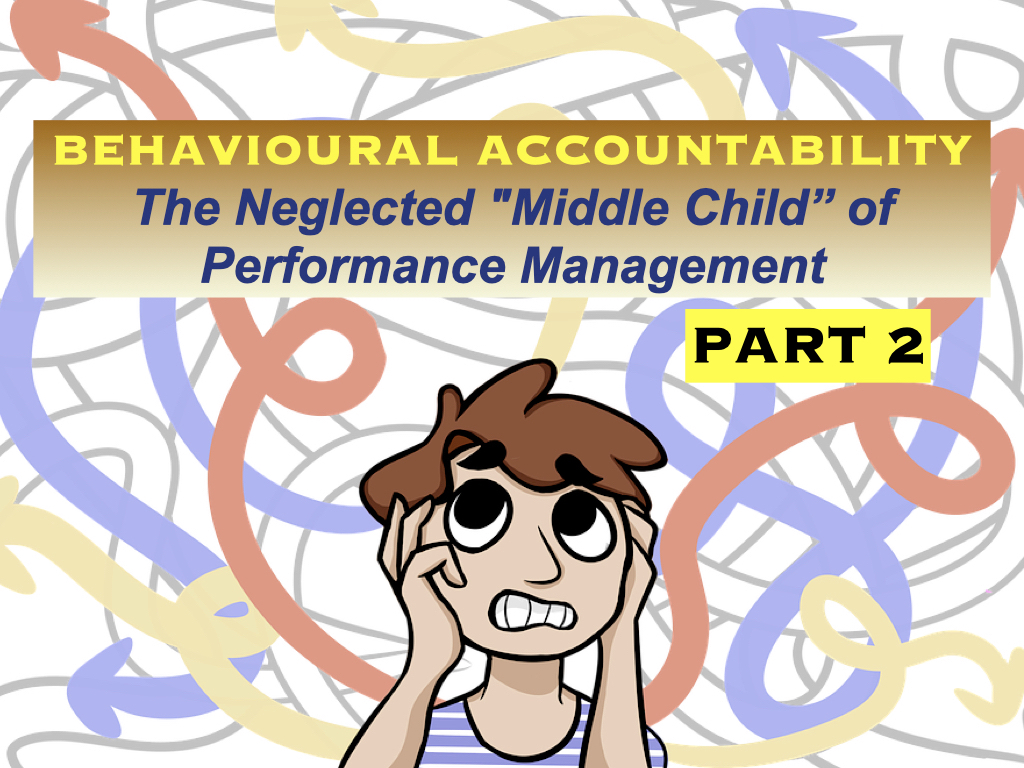
Blog
BEHAVIOURAL ACCOUNTABILITY: The Neglected “Middle Child” of Performance Management (PART 1)
By Tony Ragoonanan
Last week,  I had the pleasure of joining the Caribbean Connect team on an eye-opening sailing experience. Our experienced instructor, Bastien, explained and demonstrated, with our involvement (so there was work involved!!), all the details of what goes into the process of sailing whether it is a competitive or non-competitive event. But, my goodness, I never realized a sail was so heavy!! Nevertheless, it was an enjoyable experience and one that we all learned a lot from.
I had the pleasure of joining the Caribbean Connect team on an eye-opening sailing experience. Our experienced instructor, Bastien, explained and demonstrated, with our involvement (so there was work involved!!), all the details of what goes into the process of sailing whether it is a competitive or non-competitive event. But, my goodness, I never realized a sail was so heavy!! Nevertheless, it was an enjoyable experience and one that we all learned a lot from.
Here are some of the key takeaways that emerged for me:
- Getting from point A to point B the fastest doesn’t mean going in a straight line
- Playing an active role in sailing involves having the skills and knowledge about the synchronicity of the boat’s moving parts
- Attention to detail in the environment will increase your effectiveness (e.g. the water can tell you where there is wind and the direction)

However, there were two additional takeaways that stood out, especially if on a Sailing Regatta (competitive event):
- Behaviours and accountability of the boat’s crew members
- The need for clear communication at all times
I realize that I live on a Caribbean island but before this, I had very little knowledge of sailing (don’t judge!!). Nevertheless, what struck me is how similar this concept is to working within a corporate environment; the need to change direction, the need for knowledge and skills, the use of tools that support performance, the need to demonstrate the right behaviours, and the value for conversations. All of these represent key components of the performance management process and even though the formal aspects of performance management may not be utilized the same way in sailing, it showed how universally important and relevant this concept is.
I thought that the takeaways, especially the last two that I mentioned (because of their relative importance in a competitive environment), presented a fitting path to the questions we must ask to further explore the aspect of performance management that I would like to focus on and that is; behavioural accountability.
 So, I would like to begin by exploring behavioural accountability within organizations to show how leaders can improve the way they manage the performance of individuals as well as teams so that they could be more aligned with both short and long-term goals.
So, I would like to begin by exploring behavioural accountability within organizations to show how leaders can improve the way they manage the performance of individuals as well as teams so that they could be more aligned with both short and long-term goals.
Behavioural accountability is a performance component that helps to bridge the gap between performance planning and goal achievement and I am calling it the “neglected middle child” because it is, unfortunately, frequently left behind in the formal performance management process based on my observations and experience. I continue to hear complaints about employee behaviour year after year and this primarily stems from the lack of accountability in this area, either because employers don’t think it is important enough to be a part of their strategic planning process or don’t know how to proceed with it. I’m afraid that we might be playing a mediocre “game” at best so it’s time to explore what full potential really means.
If there is one thing I know for sure, it is this; accountability works best in an environment of carefully defined and reinforced behaviours. This is primarily because accountability is all about performance, and a major component of performance is behaviour.
There is certainly always a focus on the measurement of results, and I agree that this is important but why not focus on what drives the results, using a more formal method?
Before I move on, I want to make one thing very clear!! Behaviour is the product of a process that involves the interaction (non-linear) of beliefs, values, attitudes, and interests within an environment. Leaders can then give feedback, have conversations, and train or coach employees to improve performance by going deeper to address the beliefs, values, attitudes, and interests that an employee may possess and eventually maintain or drive behaviour change.
Behaviour is therefore not the “root”. However, it is the only component that is OBSERVABLE. How would you know if someone needs development? You have to go by what you are observing and to some extent, what you have discussed. You certainly can’t have an appraisal meeting and discuss beliefs, values, attitudes, and interests without having a conversation about what behaviours were actually demonstrated. Behaviours capture the detail of what you expect your people to do.
So doesn’t it make sense to focus on behaviours?
So let’s begin with the key questions:
1. Have you defined the behaviours you want?
In most of the larger companies, what they call “competencies” may already exist. A competency is an observable and measurable pattern of knowledge, skills, and abilities that an individual needs to perform work roles successfully. However, a competency also has a behavioural component. Behaviours represent what a defined competency looks like “in action.” A competency, therefore, takes into consideration not only “what” an employee is doing in terms of the application of their ability using skills and knowledge that they possess but “how” they are doing it and this is absolutely crucial to define. These components fit together to ensure an employee’s competence.
When I worked in the pharmaceutical industry, there were five competencies to be demonstrated in the organization I worked for. These were measured separately from the goals and KPIs. One of the competencies, “Promoting an open exchange of ideas and knowledge” aligned with the following defined behaviours:
“Creating a culture of open and honest communication where ideas, thoughts, and different points of view can be freely expressed.”
“Must seek and provide feedback to others to improve performance and decision-making.”
During the appraisal process, to show my competence in this area, I was required to give specific examples (as proof) of instances where I asked my direct reports to give their opinions and/or a specific circumstance where I gave someone feedback or asked for it. This way, leaders could ensure that the gap between the desired behaviour and actual behaviour was minimal.
Let’s face it, people who possess the required skills, knowledge and abilities to do a job successfully may not always perform the way they should.
2. Do you have conversations that support the behaviours?
Let’s keep in mind that having a conversation is a leadership behaviour in itself and must be done correctly. Conversations are a major component of performance management because they help to create clarity not only for the individual but for the team as well. How? They help employees to:
- Understand defined expectations (goals, competencies, and the corresponding behaviours)
- Improve relationships
- Drive behavioral development over time
The conversations leaders will have with their employees will depend on what they are trying to achieve and the type of rela tionships they want to have with them. Conversations ensure that in addition to supporting the employee in getting the job done, there is a relationship focus as well. While I know that relationships are not going to be important to everyone, it has become a crucial part of the performance management process.
tionships they want to have with them. Conversations ensure that in addition to supporting the employee in getting the job done, there is a relationship focus as well. While I know that relationships are not going to be important to everyone, it has become a crucial part of the performance management process.
There are many types of conversations but the following are some of the most important ones that align with behavioral accountability:
- The Expectations Conversation – This is an immediate conversation and one that not only ensures clarity of goals but clarity of expected behaviours going forward. This latter is a component that is often neglected. As long as behaviours have been defined, have a conversation about how they relate to goals.
- The Performance Conversations – This is usually the formal appraisal but it is not necessary to only have this conversation at the end of the financial year. This can be ongoing planned conversations about what is going well, and what is not going well and will include positive and negative feedback to the individual as well. This ensures that nothing that is discussed during the formal annual or in some cases bi-annual appraisal (recommended) is a surprise to the employee. N.B. The performance appraisal document is a “living”, “breathing” document, a moving part that must be used often.
- Well-Being Conversations – When was the last time you went to an employee and asked about how they are doing personally? These conversations help to not only build relationships but also encourage employees to feel more comfortable opening up. They increase the level of psychological safety, a crucial component of teamwork.
- Coaching – Even though what is discussed during coaching sessions may incorporate content from the other conversations, coaching is a formal process that will dig deeper into an individual’s mindset to address specific areas of development that the other conversations may have led to.
As leaders, it is crucial to use these conversations to assess the nature of the relationship, build upon it and and “open the door” to employee development. Leaders should ask: What is the relationship lacking? What should I be aiming for? What type of environment am I creating?
In part 2 of this article, I discuss how to get the most out of these conversations with the employee to make sure that the “wind hits your sails,” for the relationships, the development of people and overall productivity.
Click below to see PART 2
BEHAVIOURAL ACCOUNTABILITY: The Neglected “Middle Child” of Performance Management (PART 2)
____________________________________________________________________
Tony  Ragoonanan is the Founder of V-Formation Training & Development. As a Trainer and Performance Management Specialist, he helps individuals, teams and businesses to align behaviours and goals, create the right organizational culture and maximize capability. Outside of this, Tony is currently minding his own business and focusing on family, football and fitness!!
Ragoonanan is the Founder of V-Formation Training & Development. As a Trainer and Performance Management Specialist, he helps individuals, teams and businesses to align behaviours and goals, create the right organizational culture and maximize capability. Outside of this, Tony is currently minding his own business and focusing on family, football and fitness!!
868-681-3492 | tonyr0909@gmail.com




Leave a reply